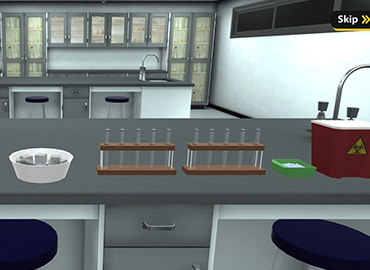





2.5M+
Active Users Worldwide
80%
Improved Learning Retention
60%
Reduction in Laboratory Costs
Hemagglutination used for the diagnosis of some enveloped viruses such as influenza viruses.
The technique of Haemagglutination Test : Haemagglutination test is used to quantify the amount of animal virus in a suspension. This is done by carrying out two-fold serial dilutions of the viral suspension in a microtitre plate or test tubes and then testing to determine an endpoint. This result can then be used to determine the amount of haemagglutinin in the suspension and is expressed as a HA titre. One HA unit in the haemagglutinin titration is the minimum amount of virus that will cause agglutination of the red blood cells. 1. Prepare 10 sterile test tubes. 2. Add 0.5 ml of normal saline to each of the test tubes. 3. Add 0.5 ml of undiluted virus to the first tube ONLY and mix gently. 4. Transfer 0.5 ml to the next tube and mix gently. 5. Repeat this procedure for the whole test tubes, discarding 0.5 ml from the last tube (8th tube). 6. This will lead to bifold dilution of the virus starting from 1:2, 1:4, 1:8, 1:16, 1:32, 1:64, 1:128 & 1:256. So the dilution in the 1st tube is 1:2 , in the 2nd tube is 1:4, in the 3rd tube is 1:8, in the 4th tube is 1:16, and so on. 7. Using a clean pipette tip, add 0.5 ml of 1% fresh RBCs suspension to each tube. 8. Two negative control test tubes (9th and 10th tubes) are prepared: one consisting of a mixture of normal saline and RBCs and the other of a mixture of non-infected allantoic fluid with the RBCs. 9. Allow the tubes to stand on ice for 45 minutes. 10. Read and record the results in each well. 11. Identify the endpoint. This will be the last well to show complete haemagglutination and contains one haemagglutinating unit.
By the end of hemagglutinin test, student will:
Then, aliquots of RBC are added to each well. The highest dilution at which clumping is observed is regarded as the HA titer of the sample. The virus titer in a sample can be estimated by multiplying the dilution fold.




